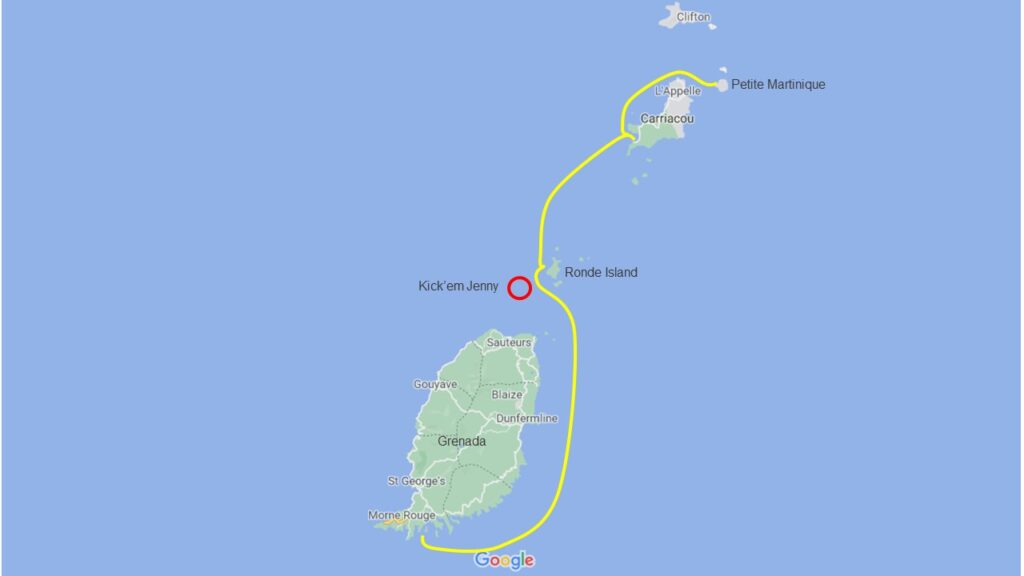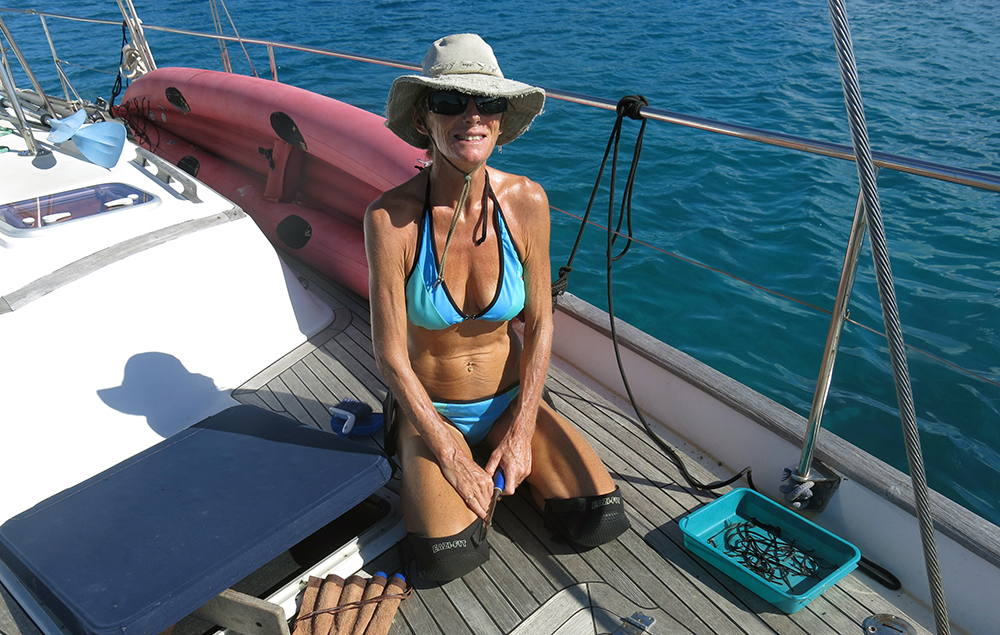
So far Grenada has been almost unaffected by any hurricanes and tropical storms but it turns out that 2020 has been an extraordinarily active year. The World Meteorological Organization has a strict procedure for the naming of tropical storms; each season they are named alphabetically alternating male and female names. This year, for only the second time since records began, they have run out of letters and had to start using the Greek alphabet for naming.

After three months in Grenada we were beginning to feel we were putting down roots so we decided it was time to shake out the sails and go cruising to some of the other islands in the state. When hurricanes pass through the northern Caribbean they block the easterly trade winds leaving relatively calm conditions to visit some of the anchorages on the windward side of the island. We picked a break in the weather and set sail for Carriacou, Grenada’s little sister which lies 35NM to the north.
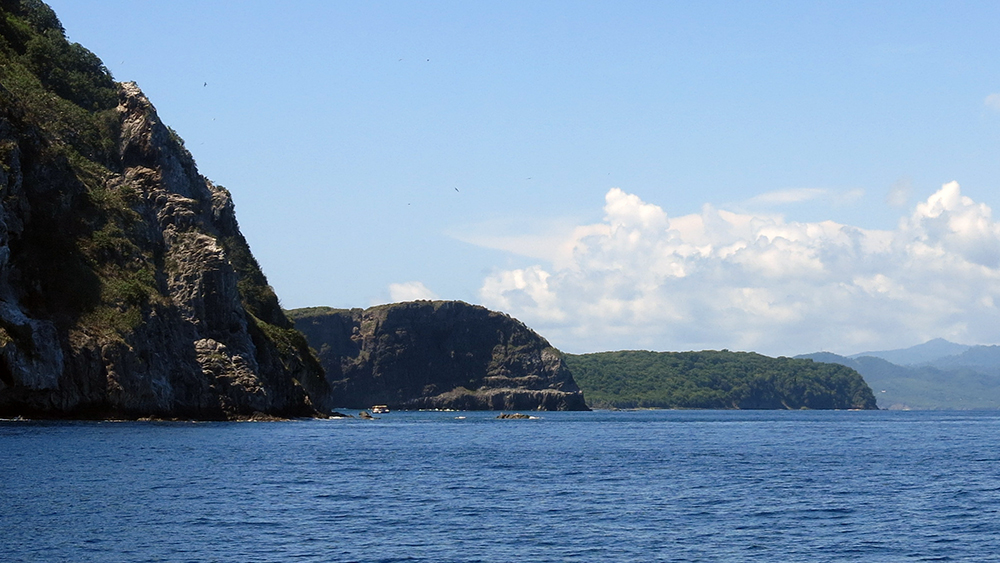
We anchored overnight at Ronde Island which lies just east of Kick’em Jenny, an active submarine volcano. It last errupted in 2015 but during times of elevated seismicity bubbles of volcanic gas escaping from the cone causing a drop in water density. A maritime exclusion zone has been established to prevent vessels sinking as they sail over it. We gave it a wide berth.

The next day we sailed up to Carriacou and anchored inTyrell Bay, along with about seventy other boats. Did I mention that Grenada is pretty crowded at this time of year? We arrived on Friday night in time to join a bunch of friends at Frogs to listen to the burlesque bluesy-jazz of Cora and Stan, a longtime cruising couple who sailed the world in a converted 1928 RNLI lifeboat.
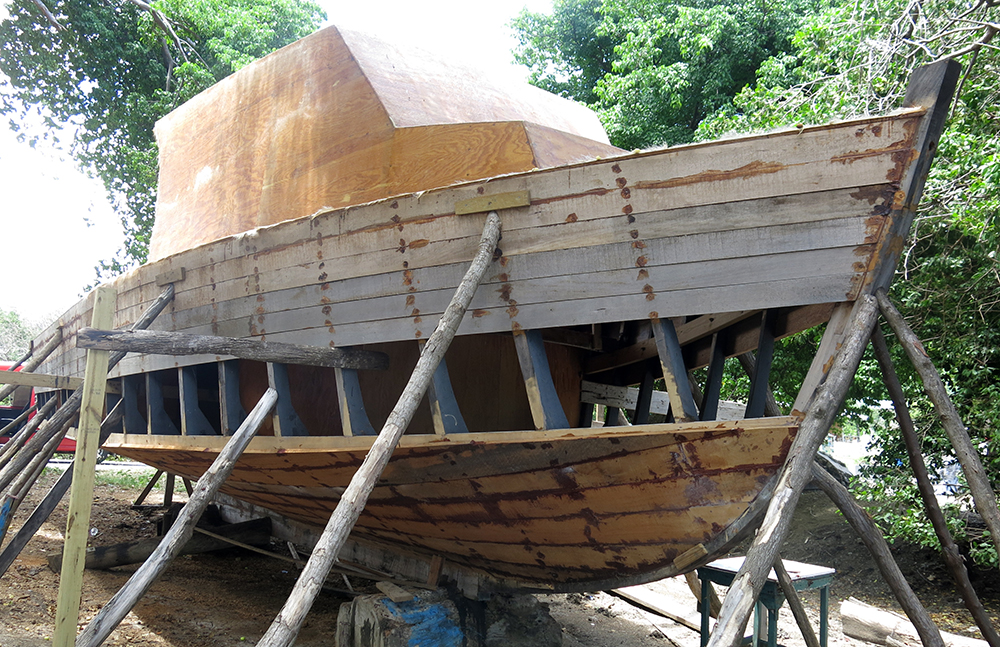
Carriacou was very sociable with several bars and restaurants and more than a hundred rum shops on the island to check out. We tried curried lambi (conch) which is very popular here, they know how to cook it right and it was very tasty. One day a passing fisherman sold us a monster lobster, it was so big we had to decapitate it to get it into the pressure cooker. We sauteed the tail in garlic butter and made a bisque from the head – we ate very well that night.
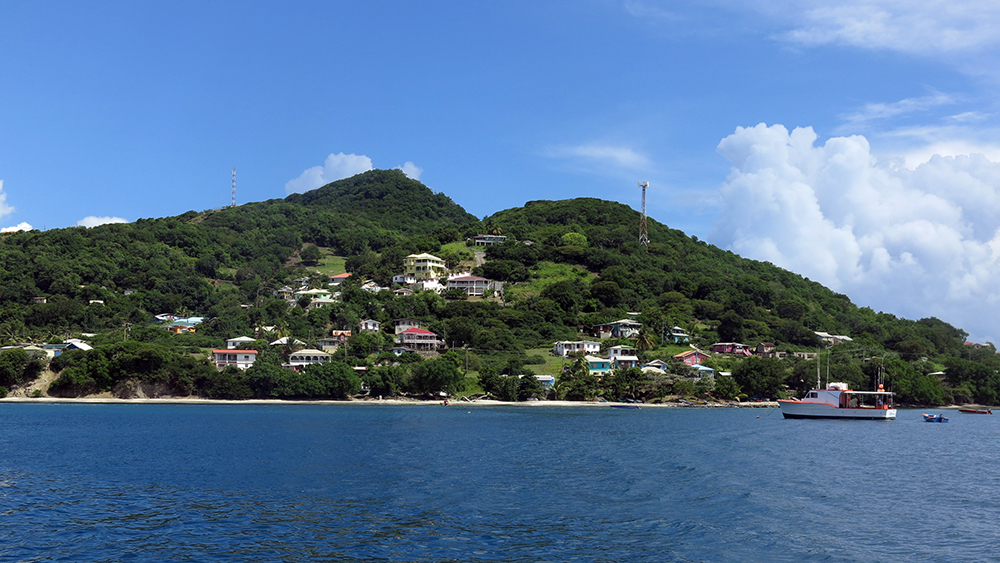
Petite Martinique is the third of the inhabited islands in the Grenada group. The first European settler was a French fisherman from Martinique who named the island after his homeland which he thought it resembled. We landed the dinghy on the beach from where we planned to walk up to the Piton, the island’s peak. We were met by a rarther irate lady who demanded to know where we came from and how long we had been in Grenada. She was concerned that we were bringing Covid19 to the island and called the police.
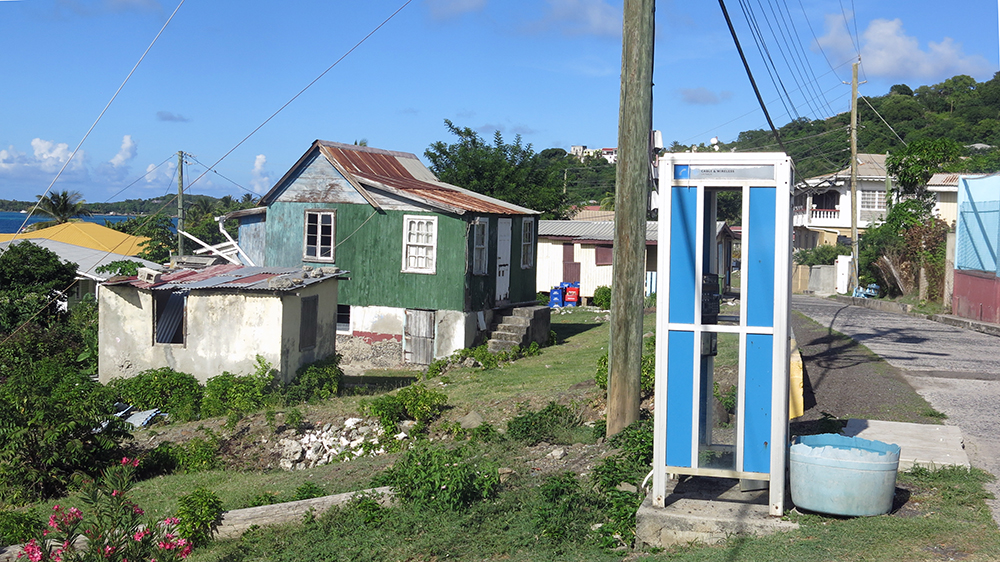
A policeman arrived on the beach wearing a splendid uniform of smart blue trousers with a red stripe, a peaked cap, shiny boots and a very serious frown. We gave him our papers which he examined, he asked a few questions and once we had put his mind at rest he gave us a great big smile and welcomed us to the island. The walk up to the peak was a a bit of a scramble following goat paths and farm tracks but the view of the Grenadine Islands stretching northwards over the horizon was worth the climb.
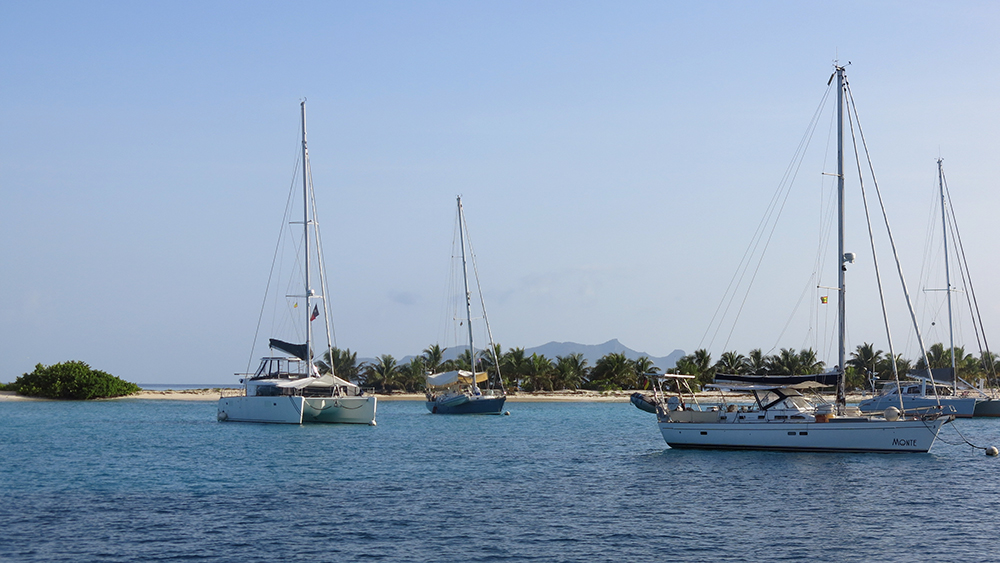
After a couple of days we returned to Carriacou and anchored off the west coast at Sandy Island, a sand bar with a few palm trees surrounded by a beautiful coral reef. The water here is much clearer than on the south coast of Grenada and we spent several days walking on the beach and enjoying the snorkeling.

It was only a short dinghy ride from Sandy Island to Hillsborough, the main town on Carriacou. It is a sleepy little place with only an occasional car or minibus to disturb the dogs sunbathing on the road. We took a bus to the village of Windward on the north-eastern side of the island. Scottish and Irish settlers established a boat-building industry in the village and two or three families still build trawlers for the local fishermen.
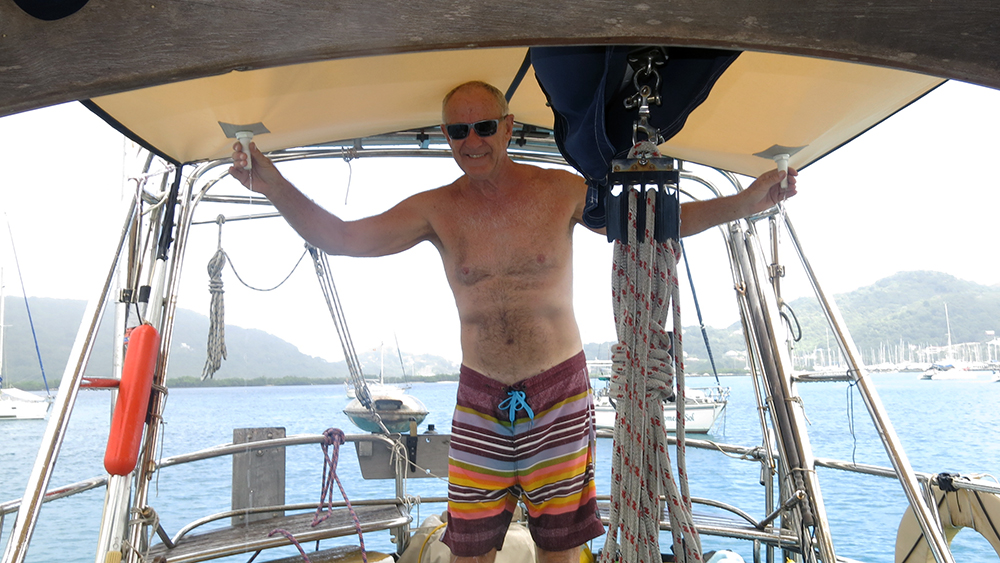
The weather has been very squally over the last few days with dense black clouds, strong gusty winds and short sharp downpours of rain. We finally got around to sewing valves into the awning so any rain that collects can drain down into jerry cans to fill up our water tanks. Unlike Grenada Carriacou has no natural water sources except rain and during the dry season water is shipped over from “the mainland”.
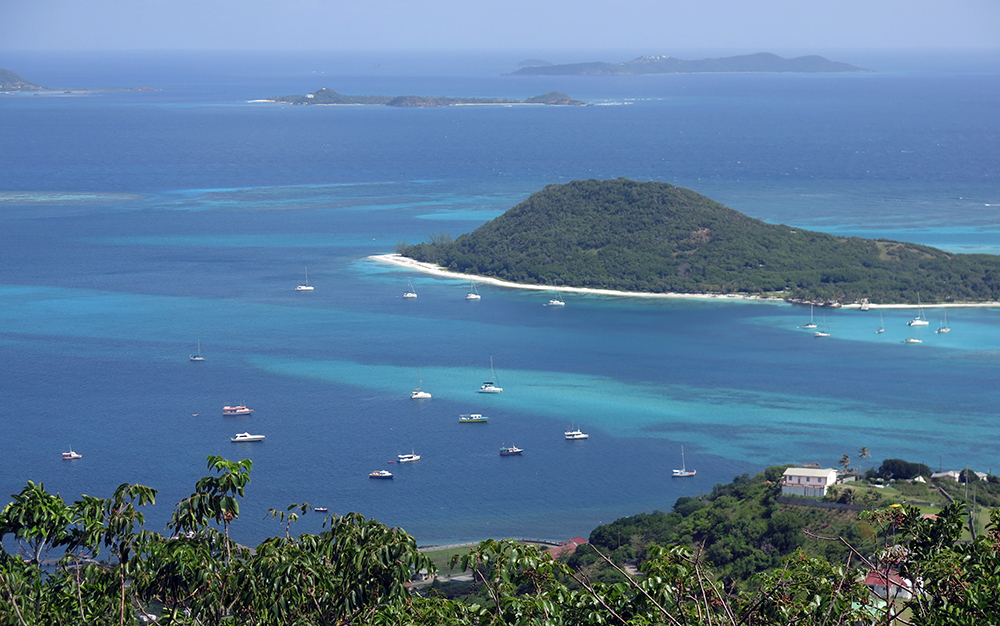
As soon as the weather clears we will head back to Grenada to contemplate our cruising plans once the hurricane season ends. Grenada has joined together with several other Caribbean islands to create a “green bubble” allowing vessels to come and go through their territories with out having to quarantine. This is great news and boats are already starting to head north to St. Vincent and the Grenadines.
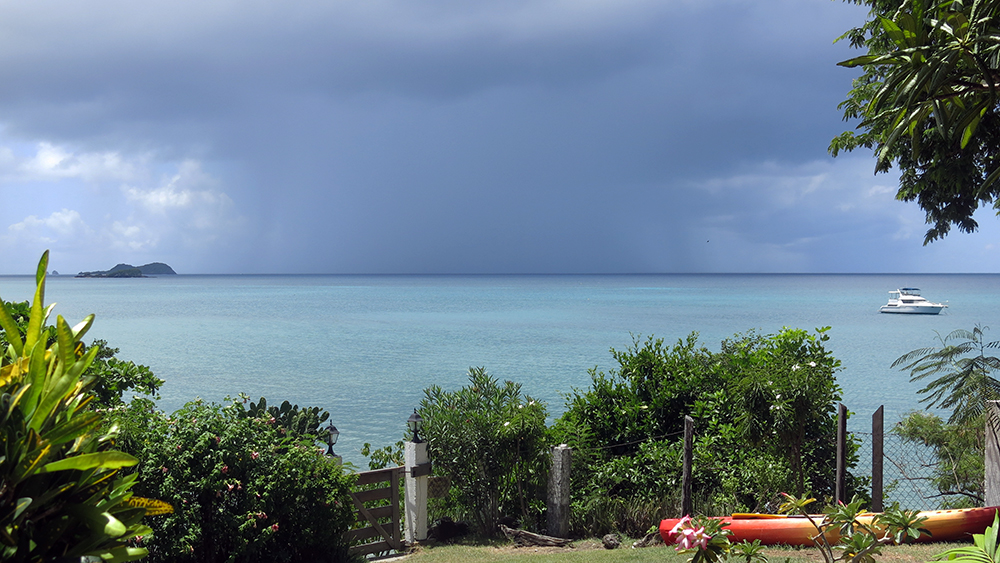
More soon from the Spice Island.
Suzy and Neil
